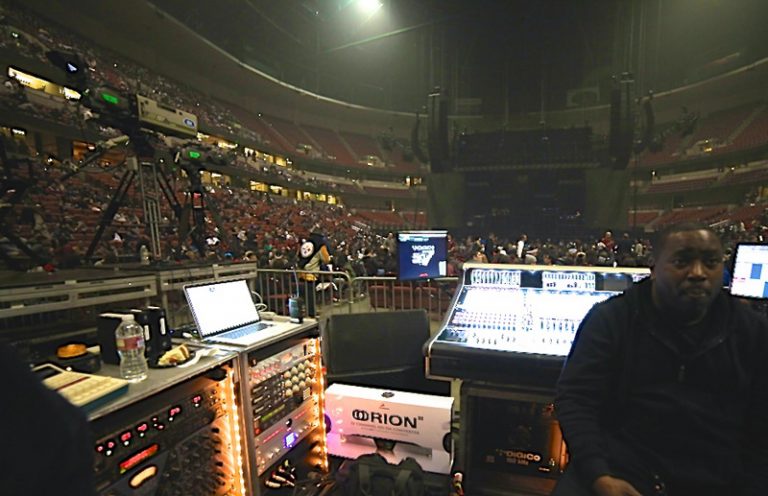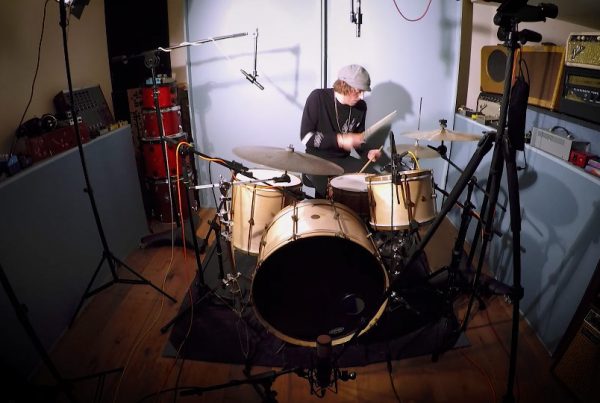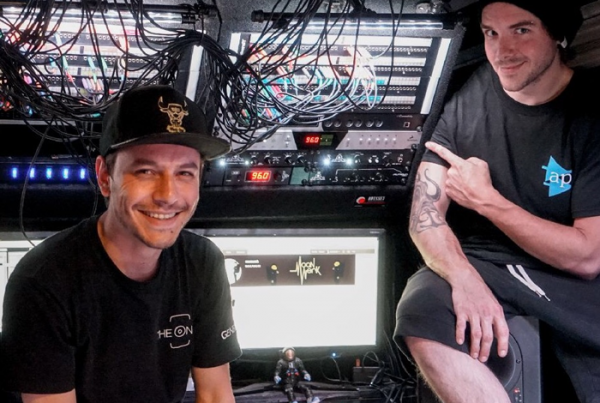— Renaissance Man of the Recording Arts and Accomplished Mix Engineer Discusses The Next Big Step in Digital Audio and the Fictitious ‘Daily Adventures of Mixerman’ —
Santa Monica, CA, February 21, 2014– Eric Sarafin, aka Mixerman, has an accomplished CV, having published three audio related music titles and having mixed recordings by top artists, including Ben Harper, Barenaked Ladies, Amy Grant and most recently, Foreigner — =which enlisted Mixerman’s signature talents on its newest Foreigner Live album. With all his diverse projects and interests, Sarafin is something of a renaissance man in the recording arts. Indeed, he is constantly pursuing the best possible audio quality in his own mixes, and has recently discovered the ultimate pairing of digital audio technology with Antelope Audio’s Orion32 multi-channel converter and its Isochrone 10M clock. Antelope caught up with Mixerman at the recent 2014 NAMM Show, where he discussed how this conversion and clocking combination has moved the dial ahead on digital audio.
Tell us about your recent and upcoming projects.
Mixerman: Well, I’ve got a total of three books out right now: The Daily Adventures of Mixerman, which was my first, Zen and The Art of Mixing and Zen and The Art of Producing. I am currently working on my next one, Zen and the Art of Recording, which will be approached from a ‘source-centric” position and talk about all the things you can do to improve the source before you even think about how to capture it.
Did you use the Antelope Orion32 and 10M combo on the new Foreigner album?
Mixerman: Yes and it made a huge difference. I had done some mixes for Foreigner previously on their ‘Unplugged’ album — this was similar because there was no drums and this makes working on a live project much easier. I was mixing some of the greatest songs ever written and had nothing in my way. It was one of the most enjoyable records to mix ever, and with the Orion32 and 10M I was no longer fighting the technology.
When did you first begin using the Orion32 — and subsequently the 10M?
Mixerman: When my assistant told me about the Orion32, which offered 32 channels for 3000 bucks, my first reaction was, “That’s great. No way it’s any good.” Then I talked to Howie Weinberg who raved about the Antelope products, and this was certainly enough for me to try it. I felt that the Orion32 sounded certainly as good, if not better than my existing converter. But once I plugged the 10M clock into the Orion32, it was a whole different ballgame. The soundstage was deeper, wider, richer— it was super-obvious. The whole soundscape opened up and I could interpret the mix sans the usual digital impediments.
How has the Orion32 / 10M improved your workflow?
Mixerman: I have always been slightly frustrated with digital because it always seemed like I had to work harder on my mixes than I did in the analog domain. But the Orion32 and 10M has significantly helped my digital set up, to the point I feel like there’s nothing in the way of me and the music. This is the biggest step forward I’ve experienced in my rig, or in any digital environment, in quite some time. It’s easily shaved an hour off of every mix I do, if not more. It’s crazy how good this combination [Orion32 and 10M] sounds — everybody needs to get both of these products in their rigs.
What else does your current set up consist of?
Mixerman: In addition to having everything clocked with the Orion32/10M and I am running Logic X on a Mac Mini. Logic X goes out to the Orion32 via USB, which is awesome because now I don’t need to use a PCIe chassis. I have heard other people say USB is sketchy, but I’ve haven’t seen or heard any evidence of this. In fact, it’s rock solid. The Orion32 outputs go into two Dangerous summing boxes, which then go out to my SSL G384 analog compressor. I’ve got a couple of Pulse Techniques EQP1a3s in line after that, then I go right back into the Orion32 / 10M combo. I have a variety of monitors, but these days I’m using the SE Munro Egg speakers in combination with my Tannoy 800As — all of this is plugged into my Dangerous monitor section, that is until my Raven MTX arrives.
Finally, was The Daily Adventures of Mixerman fact or fiction?
Mixerman: A lot of people believe that it was based on fact, and it’s a reasonable theory. But that story was completely from my imagination. I’ve hesitated telling people that because I feel like the story unfolds better if you believe it is real, but it was completely fictitious. Basically. I’d get up everyday and start writing, and people started going crazy on the Internet. Then I would read what they said and start constructing the next chapter. I would think about things that happened to me over the years and grabbed the personalities and experiences I had among those I’d worked with. It was classic satire that got more and more outrageous as it went along. That didn’t seem to shake off a great many readers. Ah, you gotta love the internet.





